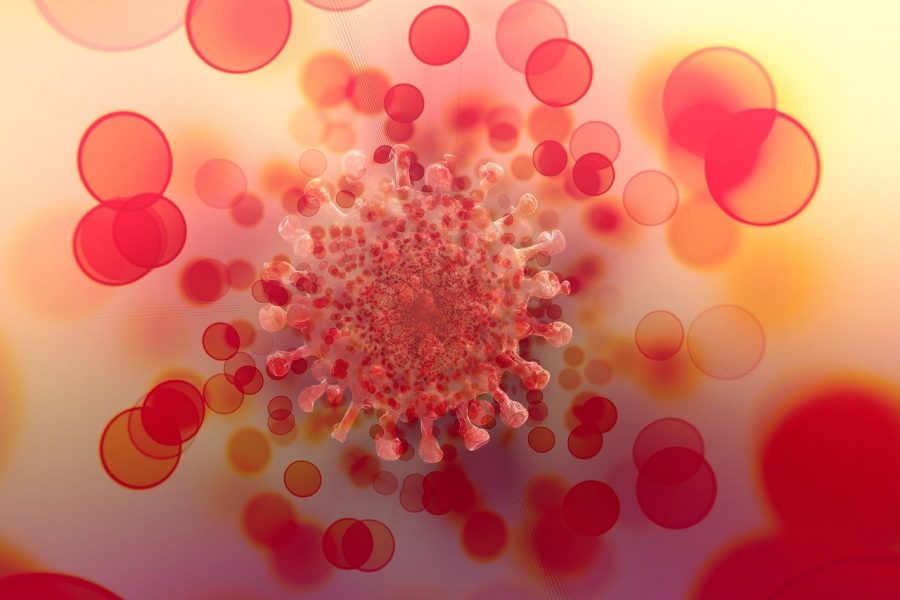What the Omicron Variant Means for the Future of the Pandemic
Discovered in late November by South African doctors, scientists suspect that the Omicron variant will soon become the dominant strain of coronavirus globally. Early research indicates that the variant may be one of the most infectious iterations of coronavirus to date.
In an ideal world, “Omicron” would be the name of a supervillain in a Netflix B-Movie.
Unfortunately, with the discovery of the Omicron variant in South Africa late November and the WHO subsequently labeling it as a “variant of concern,” it is a very real threat looming over the world as we near the second anniversary of the COVID-19 pandemic.
Many countries, including the U.S, initially implemented various travel restrictions in an attempt to slow down the variant’s spread. Despite this, the variant has quickly become the dominant strain in the US, causing infections across the country.
According to researchers and health experts, Omicron is more transmissible than previous variants. What separates Omicron from previous strands is a mutation on its spike protein, an outer protein that heavily influences a virus’s ability to spread.
Its known mutations have also caused concern. The Delta variant only has 12 mutations so far; Omicron has at least 30.
Despite the startling facts and fear surrounding the emergence of the Omicron variant, the variant is being cautiously labeled as a significantly milder version of coronavirus by experts.
This is mostly due to Omicron showing signs of having lower hospitalization and death rates in early cases. Additionally, when patients with Omicron are hospitalized, it is for much shorter durations.
Omicron’s lack of severity could be because the variant evolved to be less deadly, but it should be noted that developed countries are considerably more prepared to face coronavirus than they were two years ago.
The developed world is more immune to the virus than it has ever been before. Accessibility to vaccination and booster shots continues to grow, and two years of the virus spreading has given many individuals some degree of natural immunity.
According to doctors, those who have received at least one dose of vaccine after COVID-19 recovery have the best protection against the virus. They also claim that receiving a booster shot after being fully vaccinated could also see around the same levels of immunity, especially against omicron.
While Omicron does appear to have infected some vaccinated individuals, these cases have been notably mild. While being fully vaccinated with two shots may not completely protect a person from contracting the variant all together, it does seem to protect against severe sickness and symptoms.
Improved global immunity through both natural and medical means has led some officials to speculate that the COVID-19 pandemic could end similarly to how the 1918 Influenza Pandemic did. After two years, circulation of the virus across the globe caused enough people to have immunity against it, preventing it from becoming a pandemic again. Now, scientists develop vaccines to combat new mutations of the virus every “flu season,” and it has become a part of our day-to-day life.
Vaccines and boosters, when coupled with the transmissibility of Omicron, could lead to herd immunity similar to the one that was seen over a century ago.
Of course, the coronavirus is different from the flu virus. Its unpredictable and varying nature has left scientists skeptical that an outcome as optimistic as the flu pandemic will play out, but it is a possibility.
The variant may be more mild, but it is significantly more transmissible, which means it is still causing a large amount of severe cases. The amount of hospitalizations being caused by the virus’s sheer infectiousness have been reaching highs similar to those seen during the surge of the pandemic in 2021. Many fear that, like then, our hospital systems will be overwhelmed by COVID-19 cases, leaving less room and resources for non-COVID patients. Majority of these hospitalized patients, however, have been notably from the unvaccinated population, along with immunocompromised individuals.
While this pandemic may not have a true “end”, like the flu pandemic, continuing to fight COVID-19 through vaccination is our best course of action. Experts assert that the best way to reach the levels of herd immunity necessary to “end” this pandemic without straining our health care systems is to get both vaccinated and boosted against the virus. The virus will most likely continue to mutate, but luckily, scientists are experienced in adapting vaccines to new variants of disease. Hopefully, coronavirus will soon fade into the background of our everyday lives.
Your donation will support the student journalists of San Juan Hills High School. Your contribution will allow us to cover our annual website hosting costs.

Anna Ho is a senior and is in her first year on The Express as both Clubs and Captions editor. When not studying, she likes to spend time out with her...






